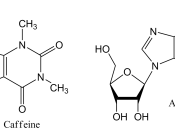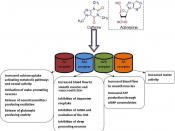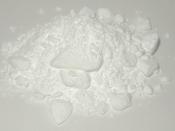Over 90% of Americans consume caffeine every day of the year. Caffeine is the ingredient that makes the public crave coffee, soda, chocolate and many other caffeine-carrying products. Americans consume about 45 million pounds of caffeine each year. In the United States, coffee drinkers drink an average of 2.6 cups per day. Total caffeine intake for coffee drinkers was 363.5 mg per day - this includes caffeine from coffee and other sources like soft drinks, food and drugs. Non-coffee drinkers get plenty of caffeine as well: former coffee drinkers get about 107 mg per day and people who have never had coffee get about 91 mg per day. Many facts are known about caffeine, such as its composition, effect on the human body, and origin; however, there are many long term effects that are currently being studied in order to discover how harmful this substance truly is. [Caffeine- Neuroscience for Kids]
Caffeine occurs naturally from the coffee tree indigenous to Ethiopia, and it may have been used as early as 850 AD in Upper Egypt, though it is considered a legend.
Coffee is the seed of a cherry from the tree of the genus Coffea. The tree yields about one kilogram of coffee per year. There are over 25 different species of coffee, the three main ones being Robusta, Libaria, and Arabica. The Ethiopians mixed crushed dried coffee beans with rolled fat balls used as food on journeys. Its cultivation and use as a beverage occurred in Arabia. By the early 16th century, the beverage was well-established in the Islamic world. Through cultural diffusion, coffee was a fashionable drug of the 17th and 18th centuries. From thereon, coffee's popularity grew tremendously. America owes its present day coffee habits to the Boston tea party of 1773, which made coffee's availability easier.



Good work
good essay but you need to work on the wording and the conclusion. really shows that you did research on this. you need to start citing things or else it'll be plagirism. if you don't start now then when you reach college it will be a wide awakening because they want you to cite all the information that you got from others
4 out of 5 people found this comment useful.